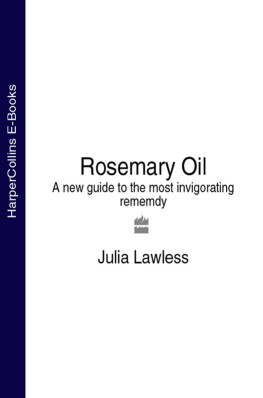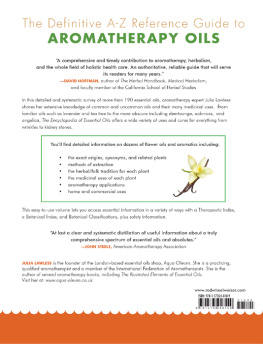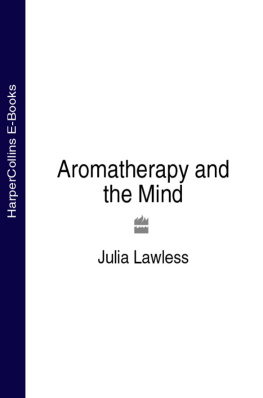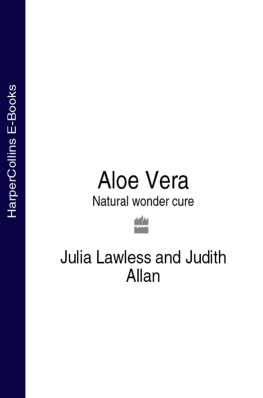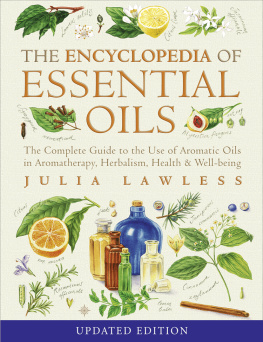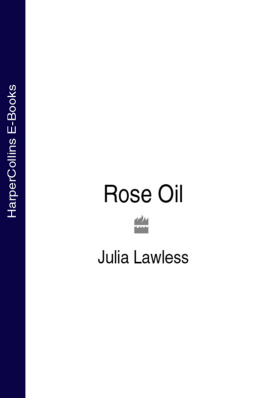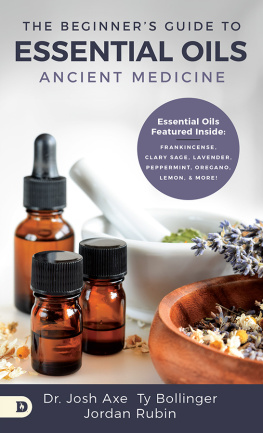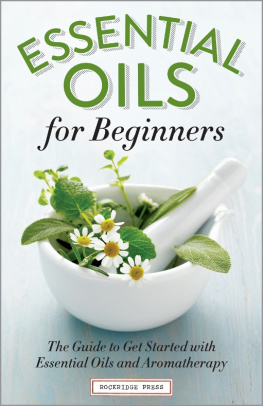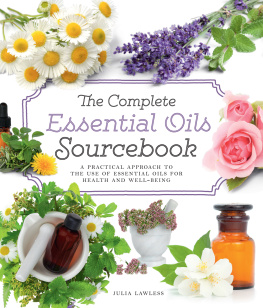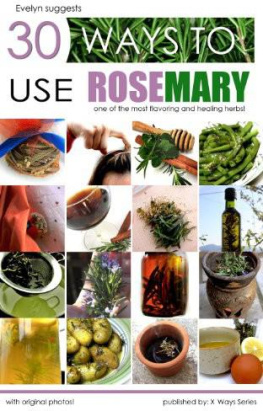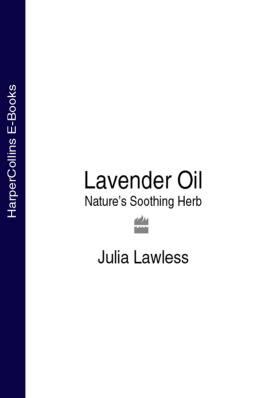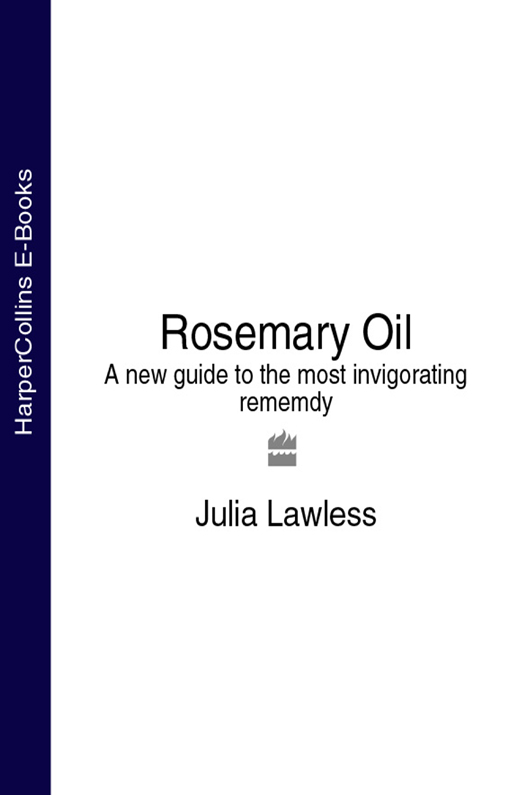To Judy
Contents
This common Rosemary is so well knowne through all our land, being in every womans garden, that it were sufficient but to name it as an ornament among other sweete herbes and flowers in our Garden
John Parkinson, Paradisus in Sole/Paradisis Terrestris (1629)
When I began writing this book I had only one rosemary bush (Rosmarinus officinalis var. officinalis) growing in the kitchen garden. Over the last few months, however, my collection of herbs has expanded to include several species of rosemary, including the beautiful deep-blue Severn Sea variety. Apart from its value for its essential oil, rosemary is one of the most versatile and pleasing aromatic plants to grow. As an evergreen it keeps its form all year round, while the fresh needles are always available for cooking. Even when dried, the leaves retain the most delightful and enduring scent. Like lavender and rose, it is one of the quintessential garden shrubs.
This book is dedicated to Judith Allan, with whom I have shared an ever-increasing enthusiasm for gardening especially with regard to herbs and fragrant plants. Over the past few years she has also given me encouragement as a writer, and we have worked on several projects together. I am grateful to the editor of Current Research on Medicinal and Aromatic Plants for permission to include The Chemistry of Rosemary Oil: A Review see . I would also like to thank Cara Denman, Wanda Whiteley and those at Thorsons, as well as my husband Alec and daughter Natasha, for their ongoing support.
Rosemarie, the chiefest beauties of Gardens and not to be wanted in the Kitchen.
B. Googe, Four Books of Husbandry (1577)
Rosemary has been called the Prince of aromatic herbs and it is not difficult to understand why! This handsome evergreen shrub with narrow, dark green leaves and small blue or mauve flowers has been cultivated since ancient times and is still a familiar sight in many gardens today. The flowers and needles are endowed with the most delightful, refreshing scent, and rosemary has always been valued as one of the most important culinary herbs, having a strong, distinctive flavour. It has also been highly esteemed for its medicinal and cosmetic properties for thousands of years, and once played a central role in many traditional rites and ceremonies.
Rosemary belongs to the large botanical family Labiatae (Lamiaceae) along with lavender and many of the other common aromatic herbs, including marjoram, sage, thyme and mint. The native habitat of the wild rosemary (Rosmarinus officinalis) is Asia Minor and southern Europe; like lavender, it thrives in the Mediterranean region. It can still be found growing in profusion along the Mediterranean coastline, on the Balkan Peninsula, throughout Spain and Portugal and, to a lesser extent, in Turkey, Egypt and the Lebanon. It is one of the few shrubs that can survive the rigorous climate of the Sahara desert, although it is more at home growing in proximity to water. Indeed, its name is derived from the Latin ros (dew) and marinus (sea), meaning Dew of the Sea.
Rosemary has probably been cultivated in Great Britain for over 600 years, having been introduced by the Romans. Some sources say that it then went out of cultivation until the fourteenth century, when it was re-introduced by Queen Philippa, wife of King Edward III. Today it can be found growing in gardens throughout the world, even as far north as Canada, Scandinavia and Russia. In more northerly climes, however, it rarely grows taller than 1.2 m (4 ft) high, whereas in its natural habitat Rosmarinus officinalis can reach 1.8 m (6 ft) or more in height. It is also slightly frost-tender and needs the protection of a cold frame or the shelter of a south- or west-facing wall to survive a cold winter. Neither will rosemary tolerate water-logged conditions, and is best grown in well-drained limey soil or in a pot containing lots of broken crockery to ensure good drainage.
Rosemary is a favourite with gardeners and is often grown purely as a decorative plant both for its scent and for its fine stature. Gertrude Jekyll writes in her book House and Garden ever-blessed rosemary all over the garden, so that at every few steps the passer-by can run his hand over the blue-flowered branchlets and smell the warm resinous incense in his palm.
Sir Thomas More let it run all over his garden walls because, he wrote, My bees love it. Other men have apparently been more cautious about letting it grow too freely! There is an old folk belief that says where rosemary flourishes, the woman rules:
There is a vulgar belief in Gloucestershire and other counties, that Rosemary will not grow well unless where the mistress is master; and so touchy are some of the lords of creation upon this point, that we have more than once had reason to suspect them of injuring a growing rosemary in order to destroy this evidence of their want of authority.
There are now many different cultivars or species available to the gardener, each with differing flower and leaf colours. The flowers can be bright blue, purplish-blue, pink, white, pale mauve or a soft, powdery blue. The needle-like leaves can vary from a dull, dark green to a variegated silver or golden form. However, the green-leaved common rosemary (R. officinalis var. officinalis) is the only type used medicinally and is the variety usually employed for the production of essential oil. It is also generally the type used for cooking.
Other well-known cultivars, some of which are occasionally used for essential oil production, include:
Rosmarinus officinalis var. albus: the white-flowered variety, quite rare
R. officinalis var. argenteus: a rare silver-leaved variegated form
R. officinalis var. aureus: a half-hardy, golden-leaved variegated form
R. officinalis Benenden Blue (sometimes known as Blue Lagoon: green-leaved with bright blue flowers
R. officinalis var. fastigiatus Miss Jessups Upright: an erect, compact shrub often grown as a hedge
R. officinalis var. roseus: a form with rosy-pink flowers
R. officinalis var. lavandulaceus (procumbens): a tender, low-growing species sometimes used for the production of an essential oil
R. officinalis Severn Sea: a decorative species with brilliant blue flowers
R. officinalis var. angustifolia (tenuifolius): a pine-scented species occasionally used for the production of an essential oil.
Theres rosemary, thats for remembrance;
pray you love, remember
Hamlet, IV.v
In Ophelias well-known parting words to Hamlet, rosemary is associated with enduring love and faithfulness, even beyond the grave. In the so-called language of flowers which was popular in Europe during the Middle Ages, rosemary stood for remembrance and, in Shakespeares time, the symbolic significance of many flowers and herbs was still common knowledge. Yet rosemary has been linked with the rituals of both marriage and death since antiquity, through the common theme of remembrance or undying devotion.
Grow it for two ends, it matters not at all
Bet for my bridall or my buriall
Robert Herrick, Book of Rosemary
Rosemarys associations with funeral rites go back to the time of the ancient Egyptians: traces of the dried herb have been found in First Dynasty tombs (circa 2000 BC). The archaeologist Prospero Alpini found sprigs of rosemary within the wrappings of a mummy in Cairo, which suggests it was used as part of the embalming process. This also gives an indication of rosemarys preservative properties and why it became such an important culinary herb, especially in those times when food needed to be stored without the luxury of refrigeration.

